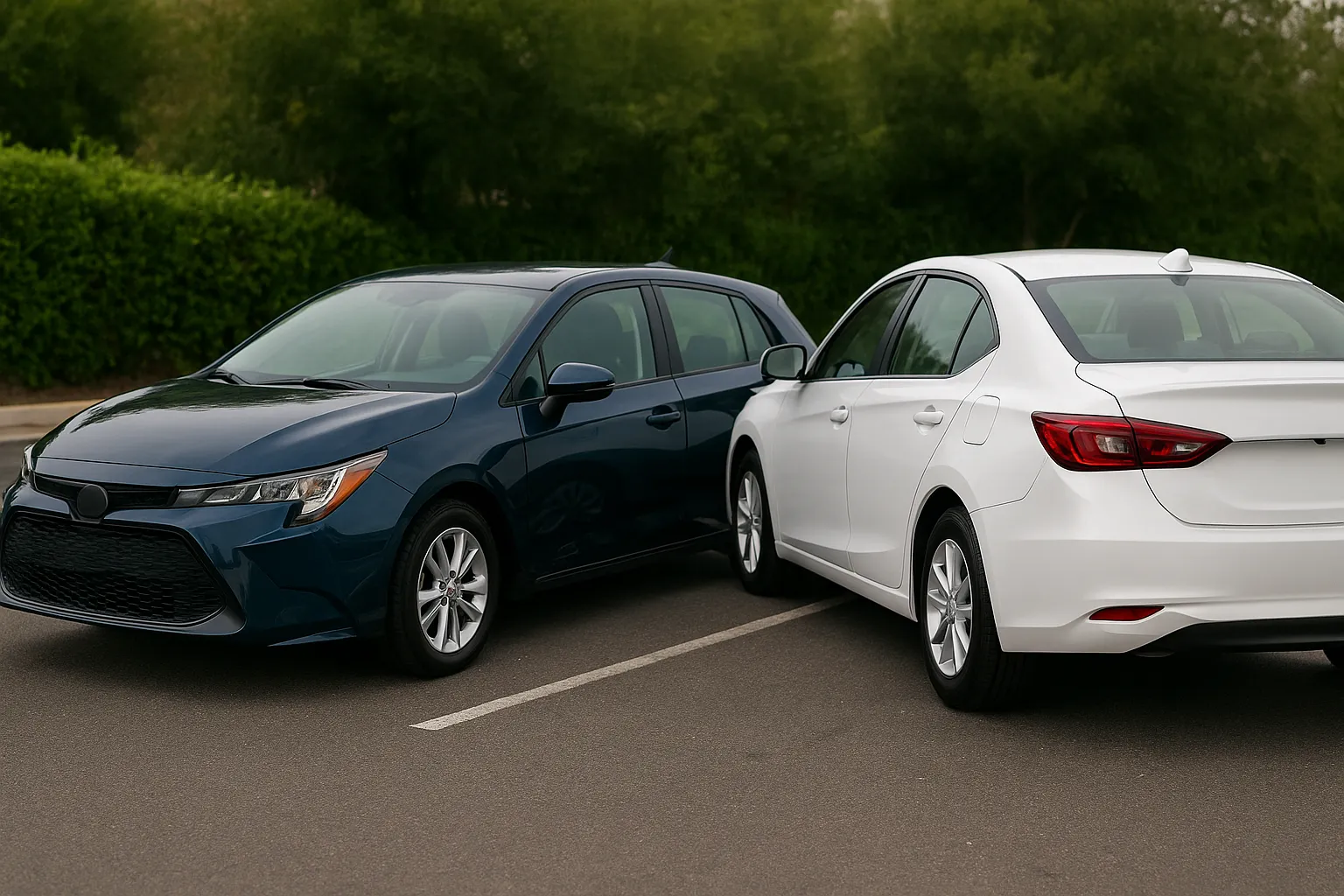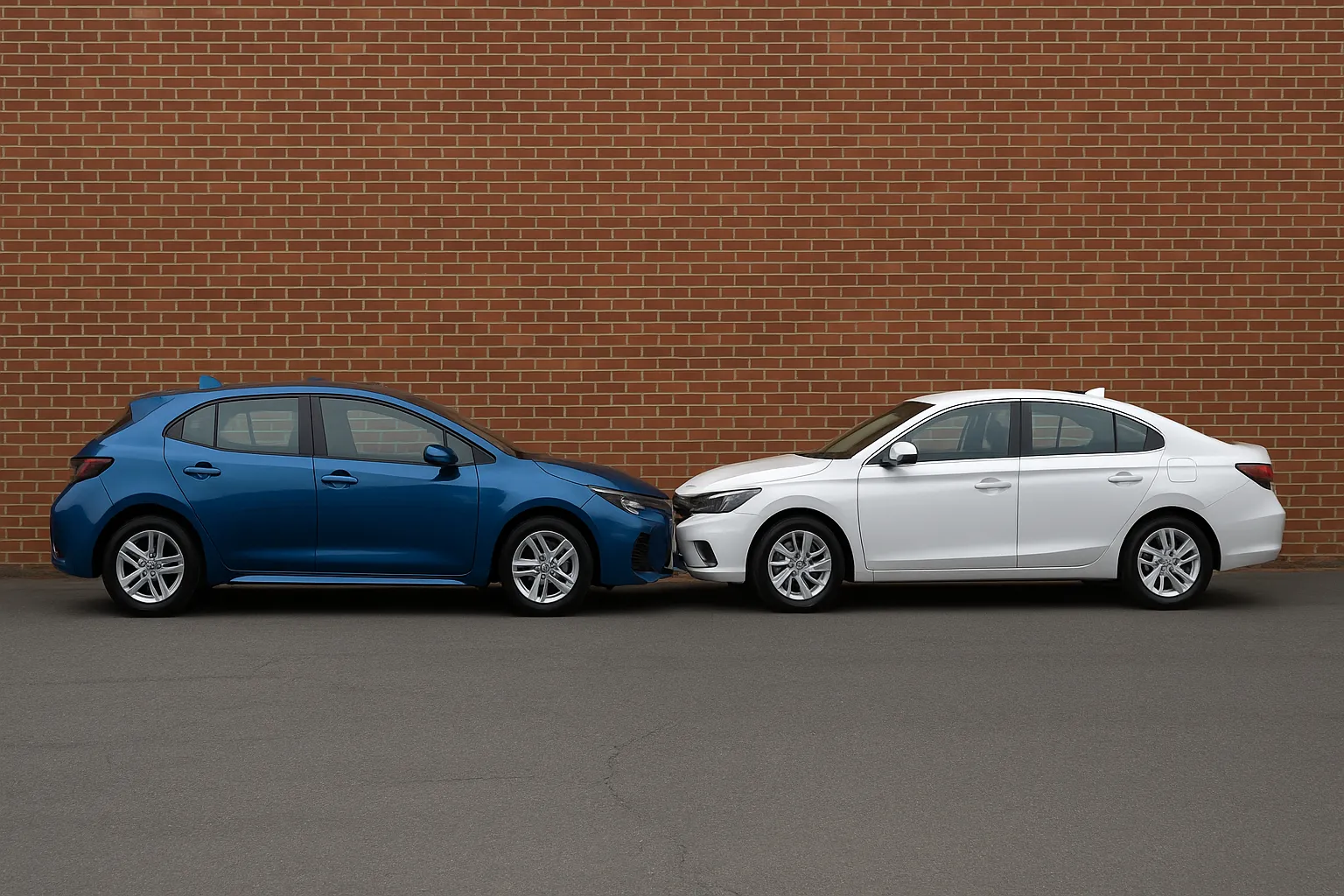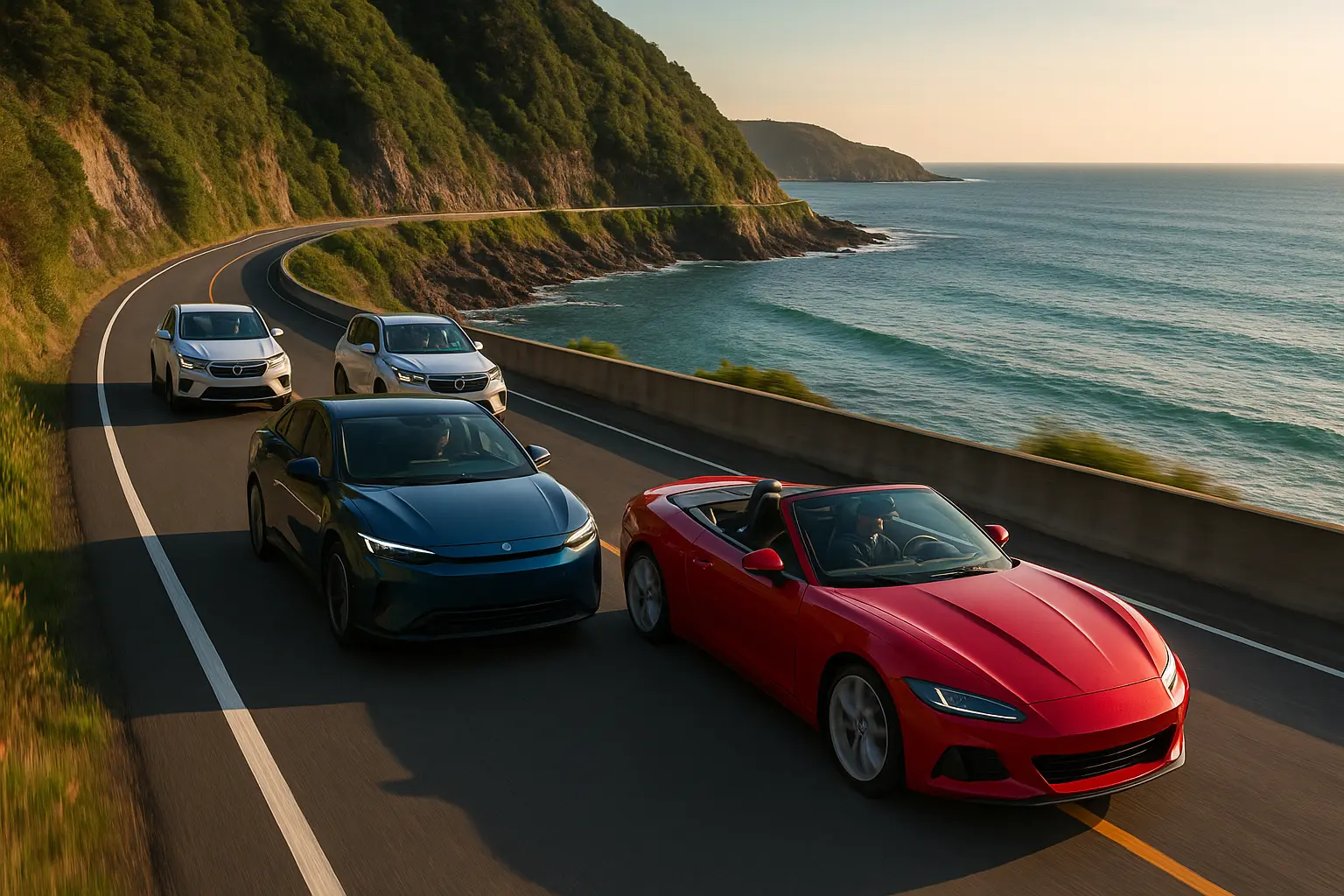Introduction: Hatchbacks vs Sedans – The Aussie Dilemma
For decades, Australian car buyers have gravitated toward two dominant passenger car body styles—hatchbacks and sedans. But as tastes evolve and the automotive landscape shifts toward SUVs and EVs, many still debate: Which is better—hatchbacks or sedans?
The answer, of course, depends on your needs—be it daily commuting, family practicality, parking convenience, boot space, fuel economy, or overall value. This comprehensive 2025 guide breaks down every angle to help you choose confidently.

1. What Defines a Hatchback?
A hatchback is a small to mid-size car featuring a rear door that swings upward to access a cargo area integrated with the cabin. It typically has a two-box design: one for passengers, one for cargo.
Key Characteristics:
Compact footprint
3 or 5 doors (including rear hatch)
Fold-down rear seats
Versatile cargo space
Generally lighter and more fuel-efficient
Popular Hatchbacks in Australia 2025:
Toyota Corolla Hatch
Mazda3 Hatch
Hyundai i30
Kia Cerato Hatch
MG3 Hybrid (2025 new-gen)
2. What Defines a Sedan?
A sedan is a more traditional three-box vehicle—separating the engine, passenger, and boot compartments. It usually features four doors and a fixed rear trunk.
Key Characteristics:
Sleek profile
Larger rear boot, but not cabin-connected
Usually more legroom and better ride insulation
Perceived as more “premium” or executive
Popular Sedans in Australia 2025:
Toyota Camry Hybrid
Mazda6
Hyundai Sonata N Line
Honda Civic Sedan
Kia Cerato Sedan
3. Value for Money – Hatchback or Sedan?
Initial Cost:
Hatchbacks are typically more affordable than sedans in the same model line. For example, a Hyundai i30 hatch starts at a lower price than the i30 sedan.
| Vehicle | Hatch Price | Sedan Price |
|---|---|---|
| Hyundai i30 | ~$26,000 | ~$28,000 |
| Mazda3 | ~$30,000 | ~$32,500 |
| Toyota Corolla | ~$30,200 | ~$31,500 |
Running Costs:
Hatchbacks:
Lower fuel consumption
Cheaper tyres and maintenance
Ideal for urban and short-distance driving
Sedans:
Slightly higher insurance
Generally better highway fuel economy
Ideal for longer commutes
Winner: Hatchbacks, especially for budget-conscious buyers or urban commuters.
4. Practicality – Everyday Usability
Boot Space:
Hatchbacks offer flexible cargo room thanks to their upright design and fold-flat rear seats.
Sedans have larger boots in litres, but access is limited due to the fixed trunk opening.
Example Boot Space:
Corolla Hatch: 217L (seats up), ~1100L (seats folded)
Corolla Sedan: 470L (fixed, non-expandable)
Rear Seat Comfort:
Sedans often win on rear passenger space and ride comfort, with more legroom and quieter cabins.
Hatchbacks might feel tighter for adult passengers in the back.
Cabin Access & Versatility:
Hatchbacks excel in loading ease, especially for bulky items.
Sedans can feel limiting for hauling sports gear, prams, or camping equipment.
Winner:Hatchbacks for versatility, Sedans for comfort.
5. Driving Experience – Handling & Ride Quality
Hatchbacks:
Agile and nimble
Shorter wheelbase and turning circle
Ideal for city driving, parallel parking, and tight laneways
Sedans:
Smoother and more planted on highways
Better weight distribution
Quieter cabin at high speeds
Performance Variant Notes:
Hot hatchbacks (e.g. Hyundai i30 N, VW Golf GTI) offer exhilarating performance in a compact form.
Sedans like the Honda Civic Type R and Mazda6 Turbo provide sporty drives with executive feel.
Winner:Hatchbacks in cities, Sedans on highways.
6. Safety and Tech Features – 2025 Comparison
Both body types now come with comprehensive safety tech as standard or optional, especially in 2025 models.
Key Safety Features in Both:
Autonomous Emergency Braking (AEB)
Lane Keep Assist
Adaptive Cruise Control
Blind Spot Monitoring
5-Star ANCAP Ratings (mostly)
Notable Additions in 2025:
Wireless Apple CarPlay & Android Auto in both formats
Larger touchscreens (8" to 12.3")
Over-the-air updates (select models)
Tech Trend:
Sedans tend to be better equipped in base trims than their hatchback equivalents, especially in premium brands.
Winner:Draw – depends on model/variant.
7. Fuel Efficiency – Which One Saves More?
Hatchbacks are lighter, more aerodynamic, and often feature smaller engines, meaning better fuel efficiency, particularly in city environments.
Sample Fuel Economy Figures (2025):
| Model | Hatch (L/100km) | Sedan (L/100km) |
|---|---|---|
| Corolla | 5.9 | 6.3 |
| Mazda3 | 6.3 | 6.6 |
| Civic | 6.0 | 6.4 |
For hybrids (e.g., Corolla Hybrid), sedans tend to perform better on highways, but urban efficiency is still led by hatches.
Winner:Hatchbacks for city, sedans close in highway runs.
8. Parking and Urban Mobility
Hatchbacks:
Easier to park
Better visibility
More suited to congested cities like Sydney or Melbourne
Sedans:
Require longer parking spaces
Slightly worse in multi-storey parking structures
Winner:Hatchbacks
9. Resale Value – Who Holds Worth Better?
Historically, sedans like the Toyota Camry have shown strong resale value due to demand in rideshare and private fleets. However, hatchbacks like the Corolla and Mazda3 also fare well, especially in hybrid trims.
2025 Depreciation Insights:
Hatchbacks in high demand in metro areas
Sedans preferred by mature buyers or long-distance drivers
Hybrids (both types) hold better value
Winner:Depends on brand and condition, but hybrid hatchbacks lead.
10. Insurance and Maintenance Costs
Insurance premiums and repair costs are often lower for hatchbacks due to smaller size, lower output engines, and cheaper parts.
However, sedans used in taxi/uber services can enjoy lower premiums based on history and usage class.
Maintenance Trends in 2025:
Hatchbacks: ~$300–$400/year (average servicing)
Sedans: ~$350–$500/year (larger parts, bigger tyres)
Winner:Hatchbacks
11. Lifestyle Fit – Which Body Style Matches You?
Choose a Hatchback If:
You’re a student or urban commuter
Parking is limited
You prefer a practical boot space with flexible loading
Fuel efficiency and lower running costs matter
Choose a Sedan If:
You value a premium feel and ride comfort
You do long drives or highway commutes
You want more rear seat legroom and boot security
You prefer a quieter, more insulated cabin
12. The 2025 Market Shift – What’s Hot?
Hatchbacks:
Still strong in budget and city segments. Popular with younger drivers and downsizers.
Sedans:
Seeing a resurgence in premium/luxury space (e.g., BMW 3 Series, Tesla Model 3). Also popular in hybrid formats.
Brands pushing hatchbacks: Hyundai, Kia, Toyota, MG
Brands focusing on sedans: Honda, Toyota, Genesis, Skoda
Conclusion: Which One Wins in 2025?
Both hatchbacks and sedans hold their ground in 2025. The right pick depends on your priorities:
For practicality, versatility, urban convenience, and price, go with a hatchback.
For comfort, premium styling, and long-distance driving, choose a sedan.
If you want the best of both, keep an eye on liftbacks or fastbacks (e.g., Skoda Octavia, Tesla Model 3), which blend sedan aesthetics with hatch practicality.
Final Tips Before You Buy:
Test drive both body types in the same model (e.g., i30 hatch vs sedan)
Consider your parking, passenger, and cargo needs
Look at servicing and insurance quotes for both
Hybrid options now make both sedans and hatchbacks more fuel-efficient
Don’t ignore boot opening style—it affects daily usability
If you're choosing between a hatchback or a sedan in 2025 Australia, you're spoilt for choice. The key is to match your car to your lifestyle—and you'll get years of value and enjoyment out of it.
Leave a comment
Your email address will not be published. Required fields are marked *




